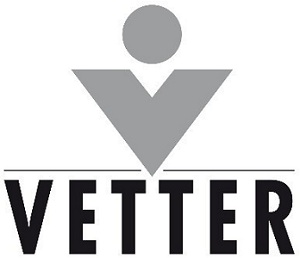When biopharmaceutical companies launch a new product, they all too often pursue new releases with no clear end in mind for vital product features like secondary packaging and device assembly. Even commercially minded teams frequently give their secondary packaging strategy far too little attention, far too late – with serious downstream implications for product processability, presentation, cost, and time-to-market.
Our Vetter team has helped numerous customers navigate this challenge. As one of the world’s leading Contract Development Manufacturing Organizations (CDMO), we know how important it is to set a strong, clear secondary packaging strategy early in the product development process. These 5 success factors are vital to that effort.
1. Make primary packaging your starting point
Upstream decisions about your primary packaging will have a big impact on downstream requirements for your secondary packaging. That’s why the best time to initiate a secondary packaging strategy is when you’re deciding on primary packaging.
For example, if your product will be packaged in a syringe with an autoinjector:
- The syringe and its barrel flange must be formatted to fit the requirements of the whole injection system.
- The syringe will need to be designed to resist higher mechanical forces during manufacturing.
- The injection system will typically be produced on an existing manufacturing platform customized for your product. This customization will require usability studies.
- The assembly machines for your product’s delivery system will need to be optimized to process the combined format of all the product components.
This kind of adaptation and customization is critical for successful development of a product’s secondary packaging. It takes time and proactive planning. Factoring both into your launch strategy as early as possible will help ensure accurate and realistic go-to-market timelines.
2. Have end users and use cases in mind
Clear, early identification of your target users, use cases, and route of administration can have a major positive impact on your secondary packaging strategy, and support your downstream success.
Take syringes, for example. They can be optimized for many different use cases. Ophthalmologists need syringes designed for the fine motor skills required for intraocular injections. Patients taking at-home therapy for arthritis will have very different needs in a syringe. Your users’ age, education, and physical capabilities are all important strategic considerations as well.
Geography can be a critical factor too, especially if you’re planning to commercialize a product in multiple countries and markets. You may need multi-country/market labels and booklets that take time to produce and vet internally. You may also need to adapt your strategy to different reimbursement landscapes. For instance, health insurance companies may prefer cost-saving autoinjectors that patients can administer at home, while physicians may prefer vial kits that require more costly in-clinic administration but allow for closer patient monitoring.
Plan for user- and market-level packaging needs like these in advance. It can help you manage their impact on your secondary packaging strategy, development costs, and timelines.
3. Get ready for market specific regulations
Many regional markets now require additional validation and documentation for more complex secondary packaging configurations. This includes products like autoinjectors.
For example, regional market requirements often include additional labelling and mandatory variable data. These extra secondary packaging requirements don’t just take up extra labelling space; they often require country-specific packaging variations too. Customized regional packaging variants like this can quickly melt large production runs into smaller country-by-country production orders – with significant implications for your supply chain.
Proactively scouting and planning for these kinds of market-level needs can help you stay ahead of potentially major delays and cost drivers.
4. Benefit from product differentiation
User-oriented secondary packaging is a valuable feature that can give your product a competitive advantage.
For instance, ophthalmic syringes can be optimized for precision control by retinal vitreoretinal specialists. Autoinjectors can feature easy-open packaging for patients with reduced dexterity. Secondary packaging that’s convenient, functional, user-optimized can help enhance safety, reduce dosing errors, and support compliance.
This added value can also be a goal you pursue in stages. After all, few product teams have the time they need to develop a product to its full commercial potential at launch. You can always build further development into a lifecycle strategy that continually enhances your product’s value over time.
5. Work with the right strategic manufacturing partner
As your product gets closer to launch, your need for product and secondary packaging production runs will increase rapidly. At that point, it’s vitally important to have the right strategically minded manufacturing partner on your team.
What do you need in that partner? Here are a few critical skills and resources to look for:
- A scalable production setup with high-grade automation that can manage significant demand changes without sacrificing quality
- A supply chain capable of reliably delivering consistent quality materials at any quantity
- In-house engineering and tooling skills to manage equipment changes and mitigate errors when needed
- Proven success in process development and qualification
Look for these qualities in your manufacturing team as early as possible to enable smooth scale-up and a secure supply of your product.
Don’t overlook industry trends
Pharmaceutical and biotech markets are in constant global flux. Consider the following factors when planning your secondary packaging strategy:
- Health authorities’ rapidly increasing demand for commercial products
- Continuing FDA emphasis on real-world evidence of product efficacy
- Increasing EMA demands for post-market surveillance to monitor product safety
- In reimbursement markets, payers and pharmacy benefit managers are demanding verification of intended product benefits and patient compliance
- Growing popularity of pay-for-performance models in certain markets, especially for expensive treatments
Many medical professionals, biopharma companies, and payers are adapting to these trends by leveraging new digital solutions – like smart labels and connected devices – that help deepen the industry’s understanding of disease and patient behavior.
The global megatrend of sustainability is also gaining traction in the biopharmaceutical industry, especially with larger companies pursuing Corporate Social Responsibility (CSR) strategies. Novartis has already pledged to be “completely plastic neutral, with all new products meeting sustainable design principles*” by 2030.
Summary: Begin with the end in mind
Setting your goals early enables you to work toward them proactively from the very start, and to ultimately achieve them with greater confidence in your budget and timing.
Start the secondary packaging discussion early, and you can get a jump on optimizing product manufacturing, maximizing flexibility, and enhancing user-centricity. A clearly defined secondary strategy can also help you ensure the best possible coordination of your product’s primary packaging, secondary packaging, and manufacturing needs. And of course, the right strategic manufacturing partner can be invaluable. A strong, strategic CDMO can help keep your entire product system on track from start to finish, and enable that every step you take will move you and your product toward your goals.
*https://www.novartis.com/our-company/corporate-responsibility/environmental-sustainability/waste, Visit 04.09.2019



















